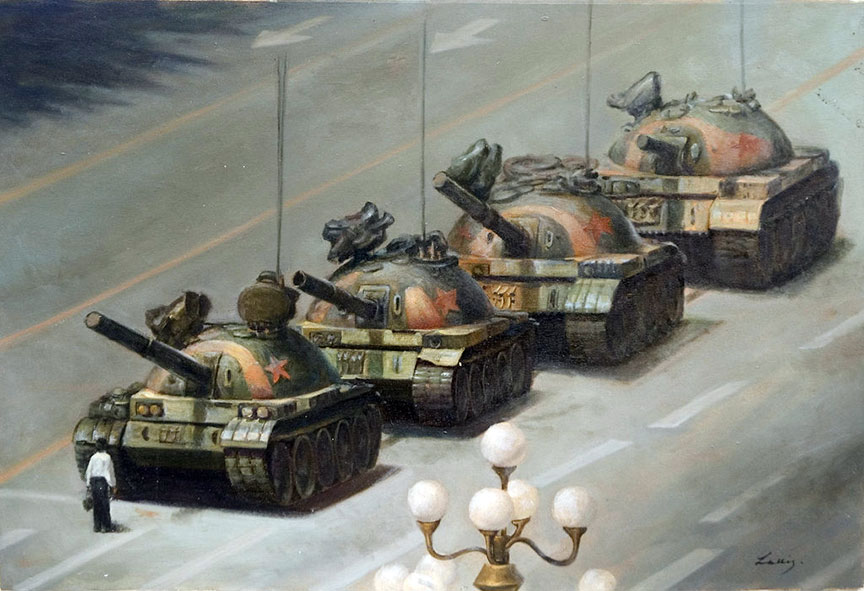Pro-Democracy Rallies in
Tiananmen Square

Protesters Try to Stop the Tanks
In April, students in Peking began a series of demonstrations demanding democratization of China. These demonstrations culminated in the occupation of Tiananmen Square, the central square in Peking. As the student rally continued, a power struggle ensued inside the Chinese government. The hard-liners won and the order went out the clear the square. This was done with considerable loss of life. Mass arrest of the protesters followed. These events were broadcast live on television throughout the world. China took a turn away from democracy on that day June 3, 1989 a direction China has followed to this day.
The protests started on April 15 and were forcibly suppressed on June 4 when the government declared martial law and sent the People's Liberation Army to occupy parts of central Beijing. Estimates of the death toll vary from several hundreds to possibly thousands.
The demonstrations were led largely by students and intellectuals. The initial reasons for the protests were diverse, but they were triggered by the death of Hu Yaobang, a reformist leader who had been ousted. Hu had become a symbol of democratic reform, and mourning for him was a way for protestors to express their frustrations with the lack of political freedom and ongoing corruption.
In response to Hu's death, students began gathering in Tiananmen Square, calling for freedom of speech, democratic reforms, and an end to corruption. Over time, the demonstrations grew larger, drawing participants not only from universities but also from among urban workers and other residents. The movement eventually attracted up to a million protesters at its height and received widespread international attention.
Despite attempts at negotiations, the Chinese government declared martial law on May 20. On the night of June 3 and into the early morning of June 4, Chinese soldiers and riot police armed with rifles and tanks were deployed to reclaim Tiananmen Square. They fired live rounds at demonstrators, and tanks drove into crowds. The Chinese government has never released the exact number of fatalities, and the event remains a highly sensitive and censored topic within China.
The Tiananmen Square protests had significant effects on both China and its relationships with other countries. The Chinese government tightened political controls, including over the media and the Internet, in the aftermath of the protests. In response to the government's actions, many countries imposed economic sanctions and arms embargoes against China.
The image of an unidentified man standing in front of a column of tanks, blocking their way, has become an iconic representation of the events at Tiananmen Square. Despite the efforts of the Chinese government to control information about the events, they have had a lasting impact on the world's view of the Chinese government and continue to be a point of contention in China's relationships with other countries.
 >
>